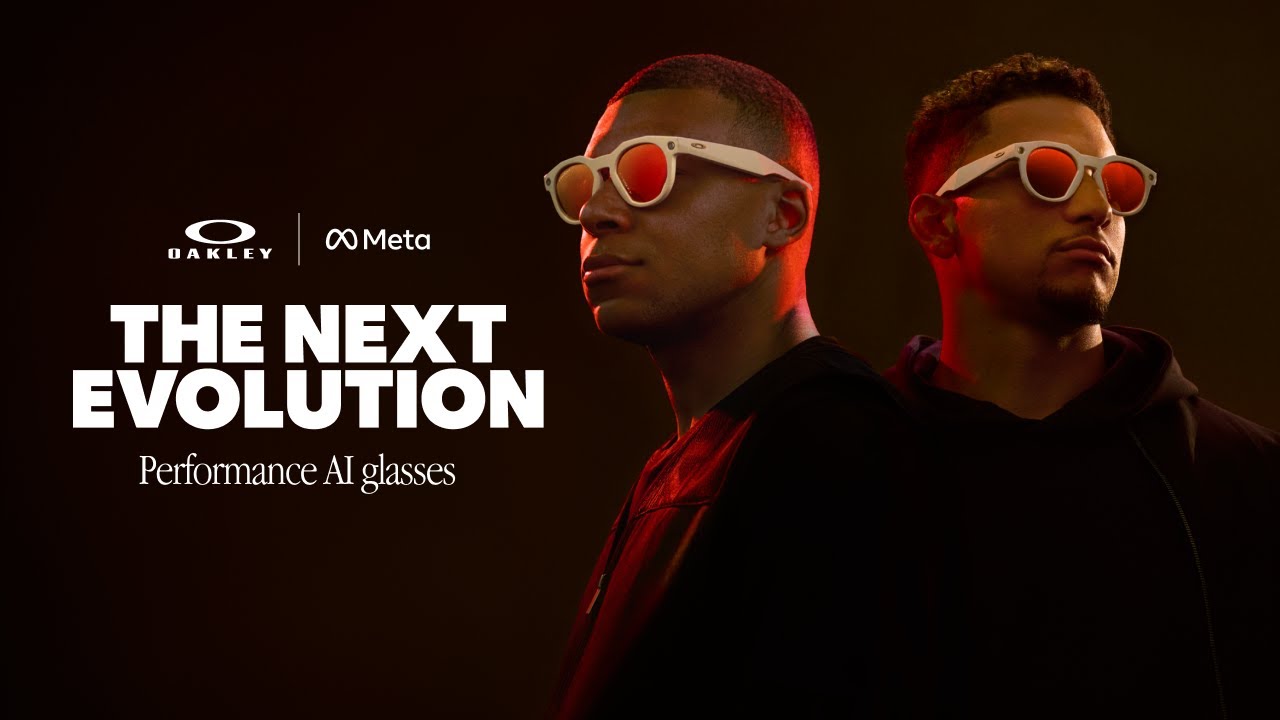Meta is doubling down on its wearable AI strategy — this time through a bold partnership with Oakley. The new AI-powered glasses, called Oakley Meta HSTN, bring together camera tech, smart audio, and Meta AI all in one sporty, $399 package.
But with Google, Snap, and others eyeing the same space, will AI glasses be more than just a gimmick?
Inside the Launch: Meta and Oakley’s AI Bet
Meta announced Friday it’s teaming up with Oakley to launch a fresh line of AI-enabled smart glasses, set to debut this summer. The new model, named Oakley Meta HSTN, features an Ultra HD camera, open-ear speakers, and direct integration with Meta AI.
The base version will retail for $399, while a $499 limited-edition variant is scheduled for preorder on July 11.
Battery life has also been improved over previous Meta eyewear, which launched under the Ray-Ban banner.
The Oakley release continues Meta’s ongoing partnership with EssilorLuxottica, the parent company behind Oakley, Ray-Ban, and Prada eyewear.
Ray-Ban Meta glasses hit the market last year and were met with moderate buzz. A Prada edition is expected in future drops.
In a statement, Meta said smart glasses are becoming a “major new hardware category” in the AI era, hinting at deeper ambitions beyond novelty tech.
But Meta isn’t the only Big Tech name betting on facewear. In May, Google confirmed it’s partnering with Warby Parker to build its own AI eyewear, backed by a $150 million investment.
Meanwhile, Snap has quietly committed to a 2026 update of its own smart glasses, called Specs, expected to carry new AI-powered features.
As of Friday afternoon, Meta’s stock was down around 2%, hovering near $684. Still, the company is up roughly 17% year-to-date, reflecting investor confidence in its broader AI play.
What This Signals for Wearable AI
The race for AI-enhanced glasses isn’t just about fashion or gadgetry. It’s a land grab for what could become the next dominant form factor in computing.
Just as smartphones became the standard a decade ago, companies like Meta, Google, and Snap are now vying to own what comes next — ambient AI interfaces you wear on your face.
For Meta, Oakley brings lifestyle credibility and sports culture appeal. These aren’t glasses just for geeks or influencers — they’re aimed at athletes, creators, and Gen Z users who live on TikTok and want content without holding a phone.
The longer battery, hands-free media, and built-in AI may feel niche today, but if the UI is frictionless, it could evolve into a true everyday assistant.
Meta is betting that fashion-forward design, plus functional AI, will spark mass adoption where others have failed.
But these glasses still face hurdles — from privacy concerns to consumer confusion about what AI wearables can actually do.
Expert Insight
Meta framed its announcement with a bold claim:
“Glasses have emerged as a major new hardware category of the AI era.”
That may sound ambitious, but Meta CEO Mark Zuckerberg has long argued that AR and AI glasses are central to the company’s future beyond smartphones.
The Road Ahead: Smart Glasses 2.0?
This new launch could signal a turning point: away from experimental headsets and toward more practical, wearable AI.
Meta’s Oakley collab may finally give smart glasses enough style, battery, and built-in intelligence to earn a place in daily life.
Still, the real test will be whether users want an AI whispering in their ear — or just want to look cool in shades.
What Do You Think?
Would you wear AI glasses if they looked good — or is this still niche tech trying to go mainstream? Sound off in the comments.
About Author:
Eli Grid is a technology journalist covering the intersection of artificial intelligence, policy, and innovation. With a background in computational linguistics and over a decade of experience reporting on AI research and global tech strategy, Eli is known for his investigative features and clear, data-informed analysis. His reporting bridges the gap between technical breakthroughs and their real-world implications bringing readers timely, insightful stories from the front lines of the AI revolution. Eli’s work has been featured in leading tech outlets and cited by academic and policy institutions worldwide.

























